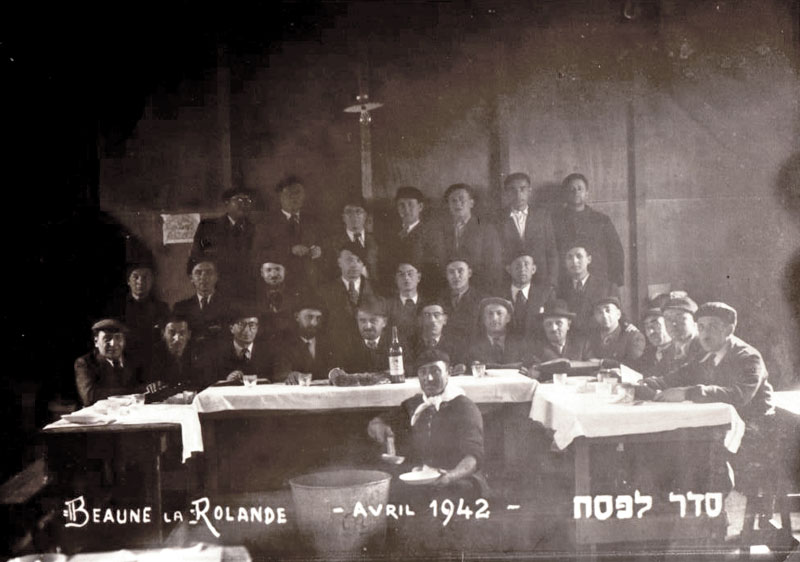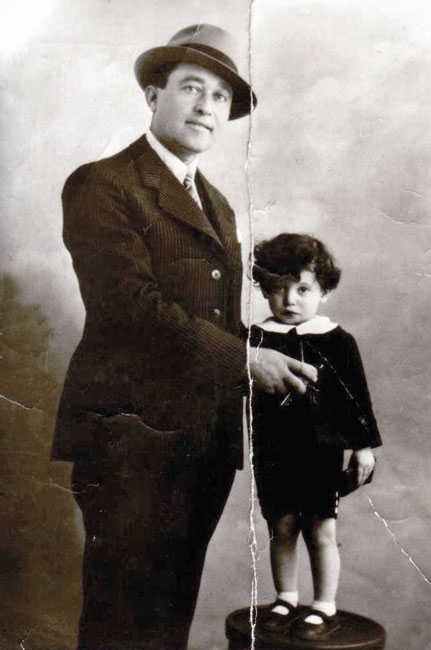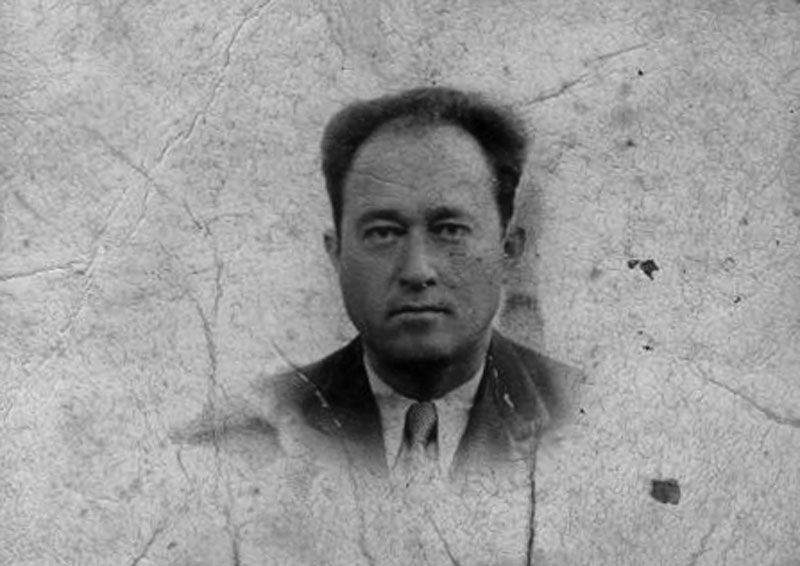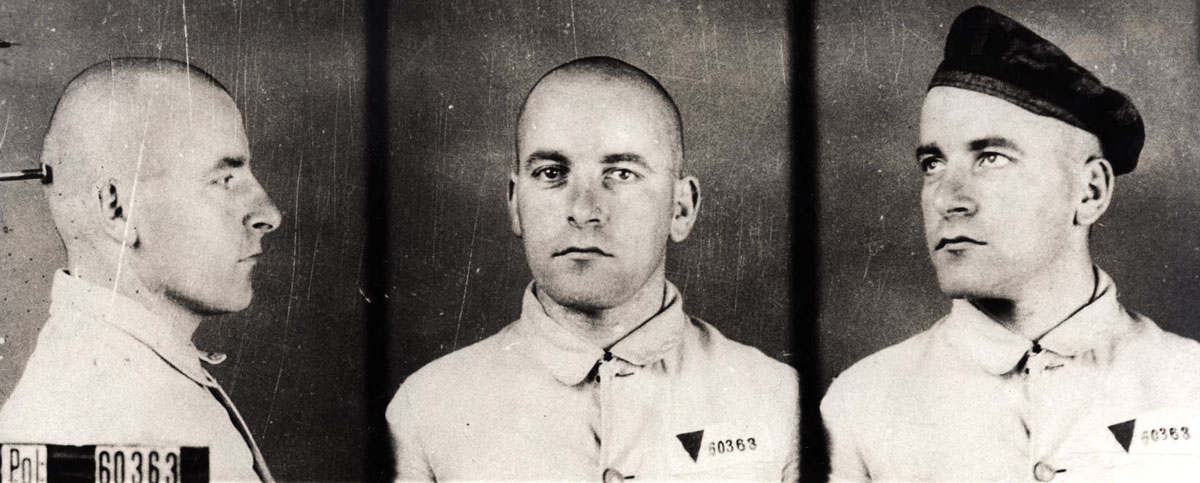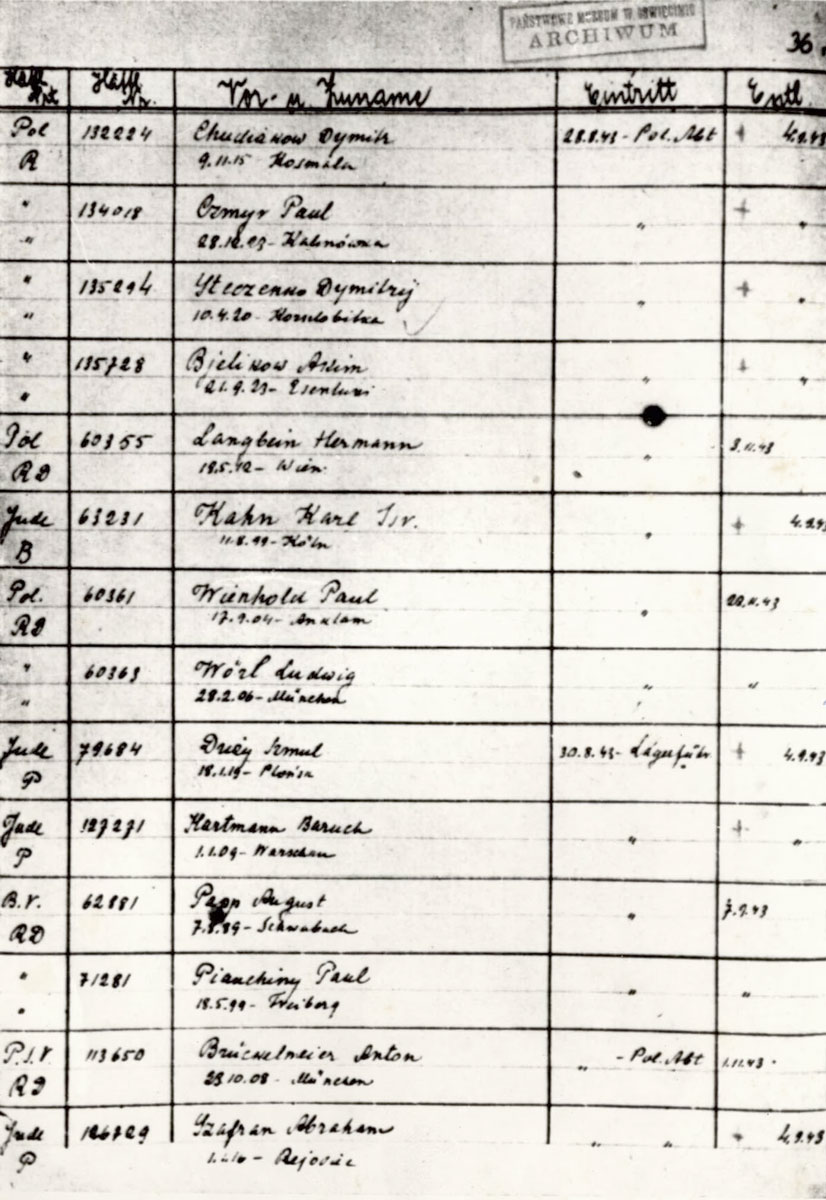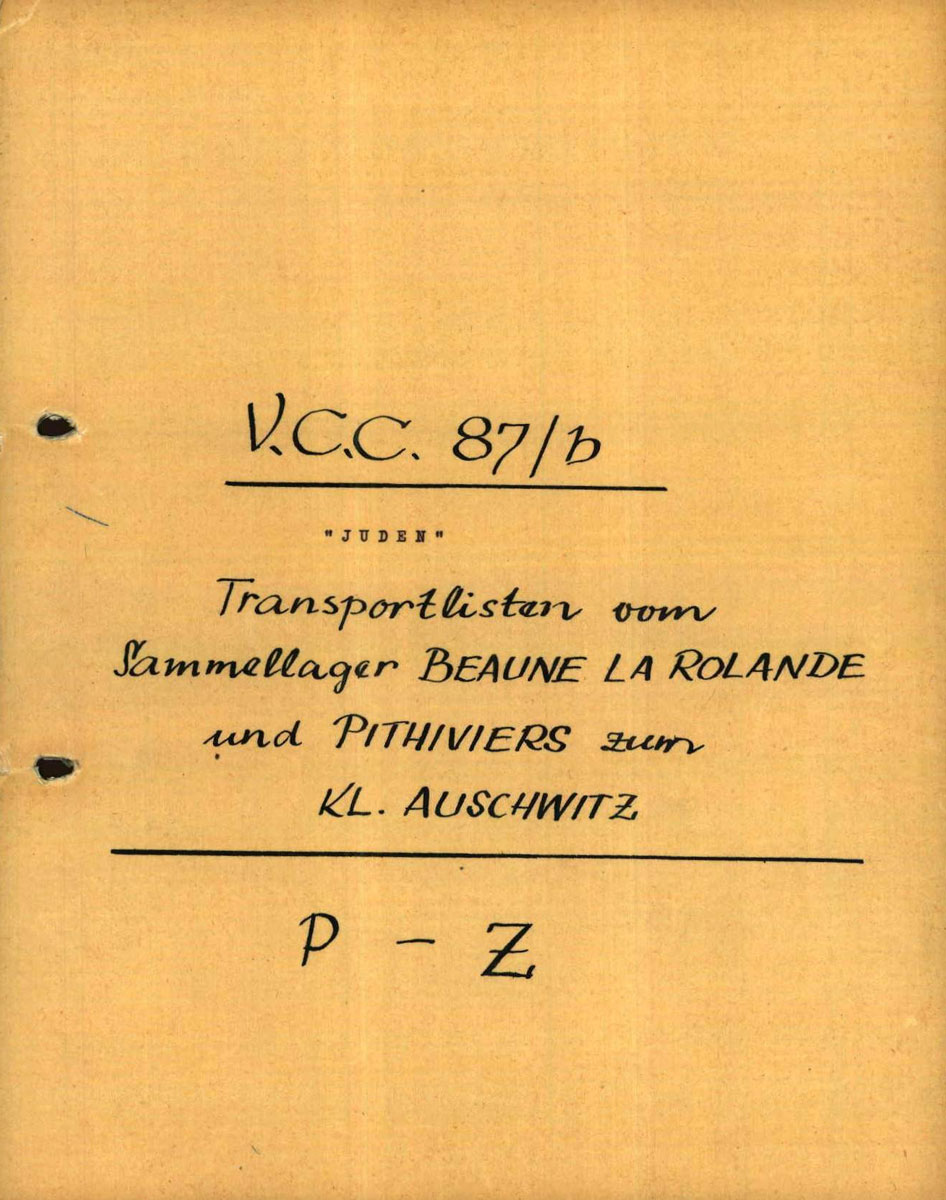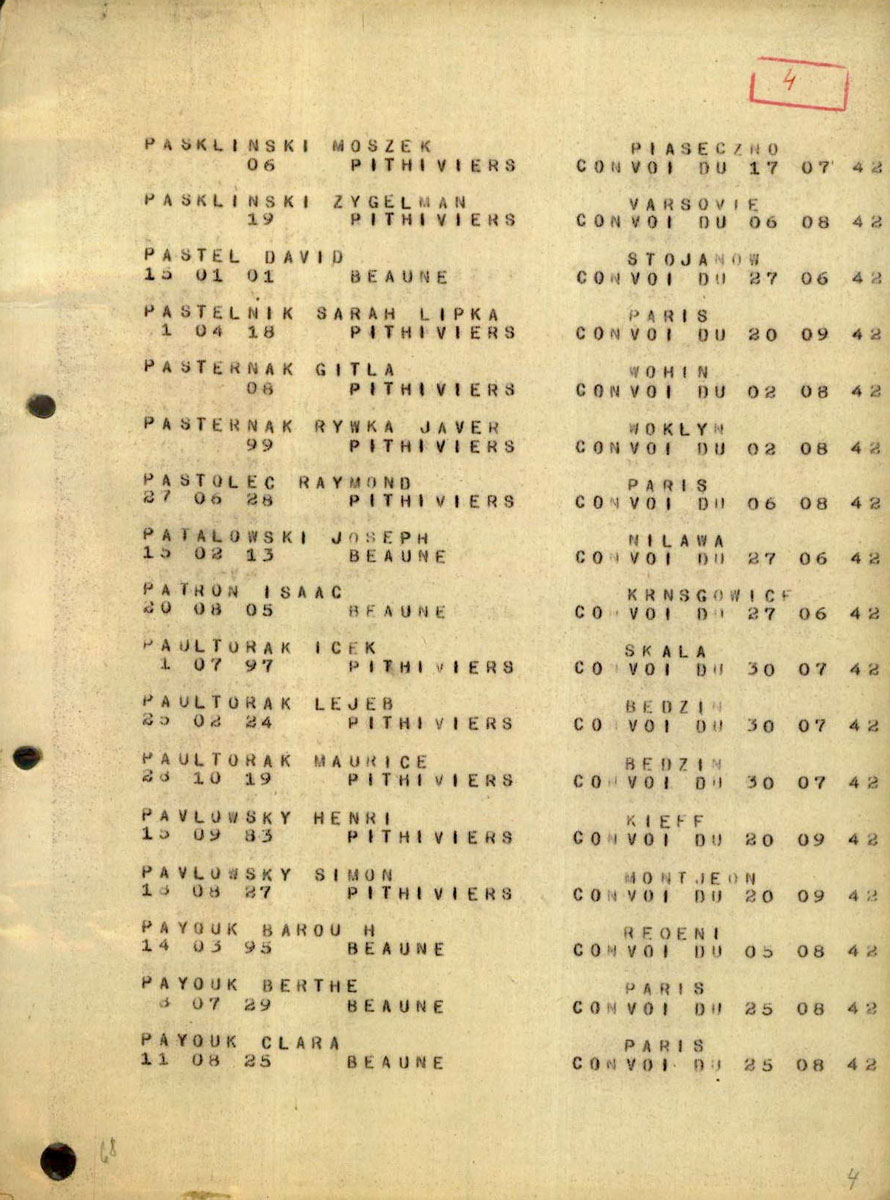David Pastel was born to Aharon and Gita (née Minsles) on the 15th of January 1901 in Stojanów, Tarnopol, Poland.
Pastel, a tradesman, was married to Leonora and the family lived in the heart of the Jewish quarter of Paris at 17 Rue Pavée. Their son Aharon was born in 1932. Leonora and her son Aharon were French citizens
One of the prisoners in the photograph is David Pastel. Pastel was deported on transport number 5 from Beaune-la-Rolande to Auschwitz. He survived until January 1945, when he was shot during the death march from Auschwitz by one of the guards. He was buried in a mass grave in the Polish village of Książenice. Pastel’s wife, Leonora, and his son Aaron survived in the south of France, under an assumed identity.
Courtesy the Pastel and Saada families, France and Israel
Pastel was a Polish citizen and did not receive French citizenship. With the outbreak of WWII he served in the French Foreign Legion, probably in the Polish Brigade.
On the 14th of May, 1941, Pastel was arrested in the wave of arrests of Jews who did not have French citizenship and was sent to the transit and concentration camp Beaune-la-Rolande.
On the 28th of June 1942 Pastel was transferred from Beaune-la-Rolande on Transport No. 5 to Auschwitz.
On the 30th of June 1942, with the arrival of the transport to Auschwitz, Pastel passed the selection and received the number 43405.
Pastel was an inmate in Günthergrube coal mine, a sub-camp of Auschwitz, where he worked as the secretary for the camp elder, Lagerälteste Ludwig Wörl. In recognition of his help to the prisoners of the camp, Wörl was recognized as a Righteous Among the Nations by Yad Vashem in 1963.
During the Death March Pastel was shot by one of the guards accompanying the march, a German by the name of Erwin. In his testimony, Kopel Bojman, a Death March survivor recalls:
"They directed us towards the nearby forest… I saw from no great distance that Ludwig Wörl, dressed in black, was moving away from us in the direction of the train tracks. When we reached the forest they opened fire on us with machine guns. People fell, the commotion was great; the cries of the injured and the shooting… it was hell. When I heard the first shots I managed to fall to the ground on my face and to bury my head deep in the snow. I lay there until the shooting stopped and we heard "Get up! Get up! Let's go!..." In the forest a number of the murderers stayed behind, Erwin amongst them. I saw how he himself shot Pastel, Ludwig Wörl's secretary, he was a French Jew, very pleasant; Erwin killed him."
Ludwig Wörl later tried to prosecute Erwin but he was unable to locate any witnesses.
David Pastel's wife and son, Leonora and Aharon, survived in the south of France under assumed identities.
The Transport
Transport no. 5
an RSHA transport No. 5 departed Transit Camp Beaune-la-Rolande on the 28th of June 1942 and arrived at Auschwitz on the 30th of June 1942. On arrival 1004 men received the numbers 42777 – 43780 and thirty-four women received the numbers 8051 – 8084. Those sent on this transport included Jews with Polish citizenship. On the 15th of August 1942, 703 of the men who arrived on the transport were still living. Six and a half weeks following their arrival at Auschwitz, around a third of the men who had arrived on transport no. 5, 301 in number, had been murdered.
In 1945 there were only 49 survivors of this transport.
